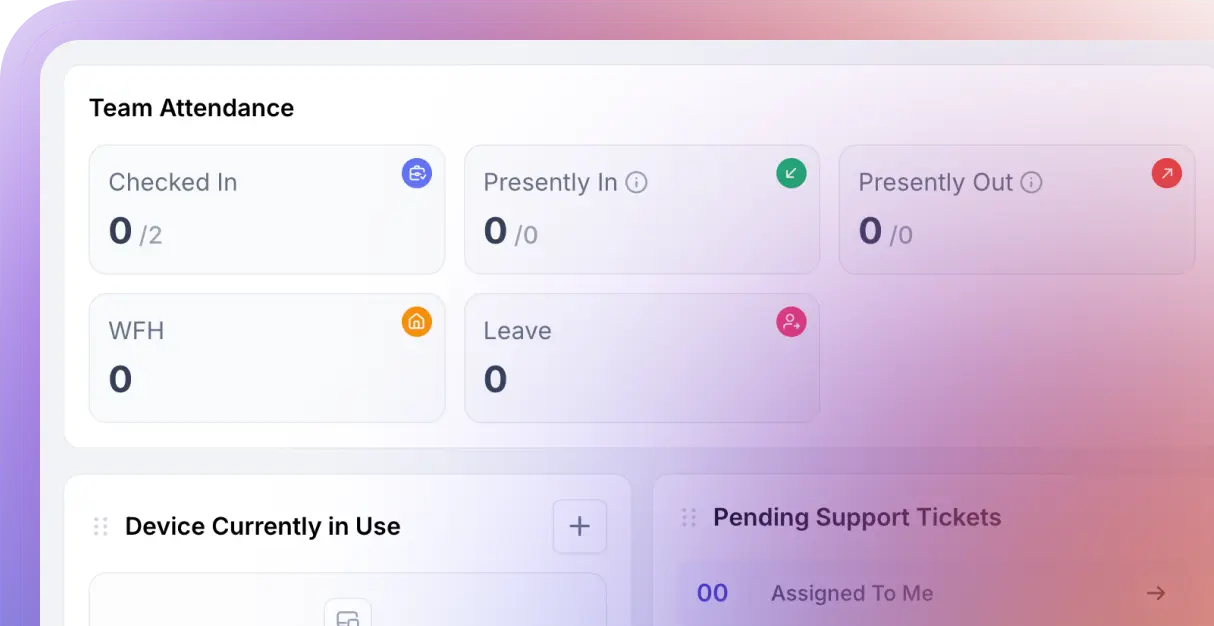Introduction
Efficient resource optimization fosters successful product development. It ensures optimal resource use, reduced waste, and timely product development & delivery. Moreover, it boosts brand value and reliability. Although it brings many benefits, for this to be possible, you need resource optimization strategies.
Resource optimization techniques allow you to use resources where they create the most value. It helps you increase productivity and quality of the product while lessening cost. Optimized resource use and improved products elevate business profitability.

This blog explains all the resource optimization strategies and their benefits. It prepares you for efficient project management and exceptional business outcomes.
Key Takeaways:
- Resource optimization is more than planning, which is about strategically using people, tools, and finances to maximize efficiency and outcomes.
- Examples of resource optimizations span across the workforce, materials, equipment, and finances: each optimized to reduce waste and boost productivity.
- Optimization differs from planning and management; it focuses on efficiency, while planning forecasts needs and management monitors usage.
- Strategies like resource leveling, skill-based allocation, cross-training, automation, and data-driven insights help eliminate bottlenecks and ensure balance.
- Benefits of resource optimization include better allocation, improved efficiency, faster project completion, cost savings, and reduced conflicts.
- CollabCRM empowers execution, offering a centralized platform to manage projects, people, and workflows with transparency and scalability.
What is Resource Optimization?
Resource optimization refers to the process that involves the strategic allocation and management of resources in an organization. These resources mainly involve the workforce, materials, equipment, and finances. The complete process includes analyzing existing resource uses, forecasting demands for the future, and implementing appropriate strategies to ensure optimized resource allocation and usability.
If you do it in the right way, efficient resource optimization helps you boost efficiency, limit waste, and achieve better outcomes. However, when you fail to do it properly, it is more likely to cause unsuitable use of resources, leading to higher costs, burnout, and increased turnaround time.
Examples of Resource Optimization
Resource optimization is about organizing each and every resource in an organization, fostering accurate usability and benefits. See the pointers below, demonstrating the resource optimization examples to help you get clarity about it:
- People: This is about ensuring the right people with the right skills are working on the related tasks at the right time. It helps optimize their time and maximize their contribution.
- Material: It refers to implementing just-in-time inventory management, intending to reduce storage costs and minimize waste.
- Equipment: This is about optimizing equipment usage in a company. This helps managers maximize uptime and cut downtime, ensuring efficient operation and maintenance.
- Finances: This one is about managing financial resources effectively, controlling expenses, and making strategic investments.
How Is Resource Optimization Different from Planning And Management?
Do you refer to resource planning, management, and optimization interchangeably? If yes, you need to understand the differences between these three. Resource planning involves identifying and scheduling resources, while resource management includes overseeing and adjusting them. The resource optimization goes a step further, as it’s about using those resources in the most efficient way possible to drive results.
See the table below, differentiating resource optimization from resource planning and resource management to get a clear picture:
| Aspect | Resource Planning | Resource Management | Resource Optimization |
| Definition | Identifying what resources are needed for a project. | Overseeing and coordinating resources during execution. | Ensuring resources are used in the most efficient and effective way. |
| Focus | Forecasting needs in advance. | Monitoring and controlling day-to-day use. | Maximizing output, minimizing waste, and balancing workloads. |
| When Applied | Before project execution (preparation phase). | During project execution (operational phase). | Continuously, before and during execution. |
| Key Activities | Estimating required people, materials, time, and budget. | Assigning tasks, tracking availability, and handling conflicts. | Balancing workloads, reallocating resources, automating scheduling, and using data insights. |
| Goal | To ensure the required resources are available. | To ensure resources are properly utilized. | To deliver maximum results with minimal cost, time, and effort. |
| Outcome | A resource plan or forecast. | Controlled execution of resource usage. | Higher efficiency, timely delivery, and improved ROI. |
How Resource Optimization Supports Execution And Outcomes
Effective resource optimization brings structure to how you get the work done. It helps managers assign the right team, align the project schedule, and resolve resource conflicts. When executed properly, resource optimization helps organizations:
- Clear prioritization of high-impact tasks.
- Minimize overload through proper capacity planning and resource scheduling.
- Deliver projects faster without compromising quality.
- Reduce costs by eliminating wasted effort.
- Improve employee satisfaction by preventing overload.
- Scale operations without unnecessary hiring or overhead.
Key Resource Optimization Strategies
Resource leveling & smoothing, skill-based allocation, and data-driven decision-making are a few resource optimization techniques. However, there are some more to add to this list. The following are all the strategies for resource optimization you should know. It helps you optimize resources and make the most of your project development.
Resource Leveling & Smoothing
Resource leveling and smoothing are some of the critical resource optimization strategies. They help balance workloads in project development. With resource leveling, project managers adjust task schedules for work allocation. With resource smoothing, they shift non-critical tasks while keeping the project deadline intact. It helps avoid sudden peaks in demand, maintain balance, limit stress on employees, and keep projects on track. Managers don’t even need to sacrifice the quality and delivery of the project.
Skill-Based Allocation And Reallocation
No two tasks require the same skills, and if assigned to the wrong person, it often leads to wasted effort or rework. With skill-based allocation, managers allocate tasks to the team member best suited to complete them efficiently. When priorities shift, managers quickly reallocate resources, keeping work aligned with business goals while minimizing downtime.
Cross-Training And Flexible Workforce Planning
Cross-training builds a versatile workforce by equipping employees with multiple capabilities, limiting over-dependence on specialists. Paired with flexible workforce planning, organizations can simply scale teams up or down and adapt to changes in demand, making sure projects continue smoothly even when unexpected challenges arise.
Automation of Scheduling And Reporting
With automation tools, project managers can instantly match resources with tasks, make adjustments to schedules when changes occur, and create real-time progress reports. This puts an end to manual scheduling and reporting, which aren’t only time-consuming but prone to human error. It eliminates repetitive administrative work, speeds up decision-making, and allows leaders to focus on strategy rather than firefighting.
Data-Driven Decision Making
Analytics and forecasting tools provide managers with accurate insights into utilization rates, capacity gaps, and future demand. Using this data, organizations can anticipate bottlenecks, optimize allocation, and make informed decisions for staffing, scheduling, and budgeting. This data-driven decision-making results in greater predictability and fewer last-minute surprises.
Improved Transparency And Collaboration
Shared dashboards and real-time collaboration tools give everyone access to the same information. This improves transparency and coordination across departments, fosters trust, and ensures projects progress without unnecessary conflicts or misunderstandings.
What Are the Benefits of Resource Optimization?
Resource optimization offers multiple benefits, including better resource allocation, improved efficiency, enhanced productivity, and reduced cost. This way, businesses ensure resources are used efficiently to minimize waste, streamline operations, and achieve greater outcomes. Here’s all you need to know about the benefits of resource optimization:
Better Resource Allocation
Excellent resource optimization strategies in place foster informed decision-making and allow project managers to ensure resources are assigned based on skills and availability. It helps them allocate appropriate resources to the most needed task, resulting in improved task quality and minimized resource conflicts.
Improved Efficiency
Accurate resource optimization ensures resources are utilized for their optimal potential, limiting idle time and waste. This not only boosts productivity but also accelerates task completion and overall profitability.
Timely Project Completion
When a business has complete visibility of its available resources and plans to utilize them, it enhances task completion rates. Project managers do so by aligning schedules with resource availability, preventing delays, and helping meet project deadlines.
Cost-Savings (reduced overheads)
With resource optimization, project managers allocate resources efficiently, ensuring unnecessary expenses are avoided to keep the project within budget. This results in significant cost reduction in project development, fostering better profitability.
Nominal Risks of Conflicts
Resource optimization helps managers identify potential conflicts early, which enables them to balance workloads and availability. This mitigates disruptions and ensures smooth execution for project development.

Choose CollabCRM: The Smarter Path to Resource Optimization
Now that you know resource optimization strategies, you must choose the right tool, and that’s where CollabCRM comes in. It’s a business operating system (BOS) that you need to have for the proper execution of the resource optimization strategy. The system stops you from juggling between multiple apps to manage different departments.
CollabCRM is an all-in-one platform for people management, project management, CRM & Invoice, recruitment, attendance, and many more. It gives you easy access to every process for complete management without risking inefficient operations, slow growth, poor decision-making, and operational chaos.
ColabCRM integrates your entire business workflow, ensures real-time visibility, and scales as your business grows. From smarter resource allocation to agile task management and seamless collaboration across teams, it’s a centralized solution for comprehensive business operations.
So, now that you’ve come to know all the resource optimization strategies as well as the right tool for execution, it’s time to access the tool and ensure excellent project management.
FAQs
A work management system, or software, automates multiple tasks, like scheduling, reporting, and resource allocation. It saves time and reduces errors while offering real-time visibility across project development.
While resource management is about tracking and organizing resources, resource optimization ensures those resources are used in the most efficient and impactful way.
Yes! Resource optimization, by balancing workloads and forecasting demand, prevents overbooking and promotes fair distribution of work, thereby preventing team burnout and sudden workloads.
Technology plays a significant role in resource optimization by automating repetitive tasks, enabling data-driven decisions, and providing transparency. It makes optimization scalable and reliable.
Absolutely. AI-powered systems for project management predict demand, suggest optimal allocations, and flag risks before they become bottlenecks, thereby creating huge differences in how project management gets done.





